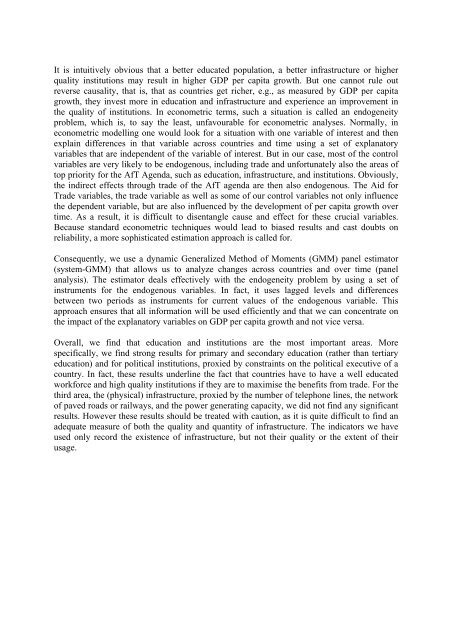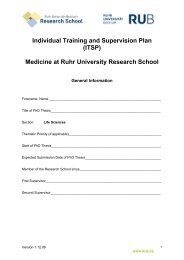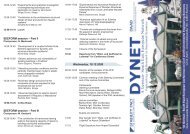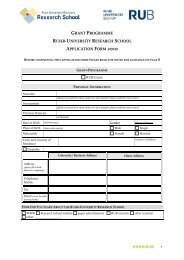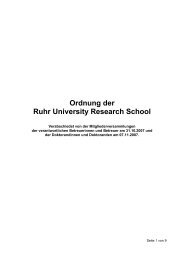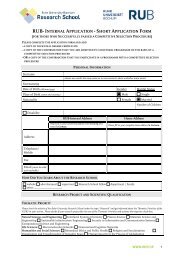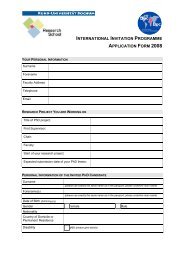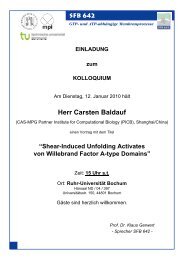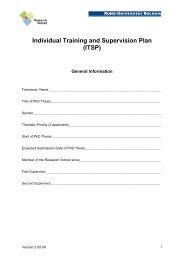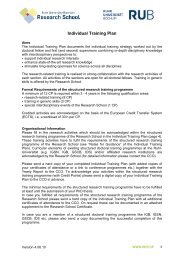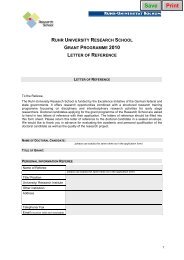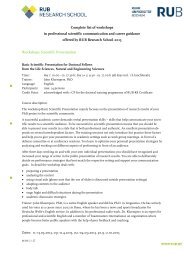Section Days abstract book 2010.indd - RUB Research School ...
Section Days abstract book 2010.indd - RUB Research School ...
Section Days abstract book 2010.indd - RUB Research School ...
You also want an ePaper? Increase the reach of your titles
YUMPU automatically turns print PDFs into web optimized ePapers that Google loves.
It is intuitively obvious that a better educated population, a better infrastructure or higher<br />
quality institutions may result in higher GDP per capita growth. But one cannot rule out<br />
reverse causality, that is, that as countries get richer, e.g., as measured by GDP per capita<br />
growth, they invest more in education and infrastructure and experience an improvement in<br />
the quality of institutions. In econometric terms, such a situation is called an endogeneity<br />
problem, which is, to say the least, unfavourable for econometric analyses. Normally, in<br />
econometric modelling one would look for a situation with one variable of interest and then<br />
explain differences in that variable across countries and time using a set of explanatory<br />
variables that are independent of the variable of interest. But in our case, most of the control<br />
variables are very likely to be endogenous, including trade and unfortunately also the areas of<br />
top priority for the AfT Agenda, such as education, infrastructure, and institutions. Obviously,<br />
the indirect effects through trade of the AfT agenda are then also endogenous. The Aid for<br />
Trade variables, the trade variable as well as some of our control variables not only influence<br />
the dependent variable, but are also influenced by the development of per capita growth over<br />
time. As a result, it is difficult to disentangle cause and effect for these crucial variables.<br />
Because standard econometric techniques would lead to biased results and cast doubts on<br />
reliability, a more sophisticated estimation approach is called for.<br />
Consequently, we use a dynamic Generalized Method of Moments (GMM) panel estimator<br />
(system-GMM) that allows us to analyze changes across countries and over time (panel<br />
analysis). The estimator deals effectively with the endogeneity problem by using a set of<br />
instruments for the endogenous variables. In fact, it uses lagged levels and differences<br />
between two periods as instruments for current values of the endogenous variable. This<br />
approach ensures that all information will be used efficiently and that we can concentrate on<br />
the impact of the explanatory variables on GDP per capita growth and not vice versa.<br />
Overall, we find that education and institutions are the most important areas. More<br />
specifically, we find strong results for primary and secondary education (rather than tertiary<br />
education) and for political institutions, proxied by constraints on the political executive of a<br />
country. In fact, these results underline the fact that countries have to have a well educated<br />
workforce and high quality institutions if they are to maximise the benefits from trade. For the<br />
third area, the (physical) infrastructure, proxied by the number of telephone lines, the network<br />
of paved roads or railways, and the power generating capacity, we did not find any significant<br />
results. However these results should be treated with caution, as it is quite difficult to find an<br />
adequate measure of both the quality and quantity of infrastructure. The indicators we have<br />
used only record the existence of infrastructure, but not their quality or the extent of their<br />
usage.


